Description
The Double Saddle Butterfly Chaetodon ulietensis is a captivating reef fish that showcases a vibrant array of colours and distinctive markings. With a maximum size reaching up to 8 inches (20 cm) in length, this species boasts a compact yet striking appearance. Its body is adorned with a rich combination of yellow, white, and black hues, while two prominent black saddle-like patterns extend across its back, lending it its unique name.
Natural Habitat:
In its natural habitat, the Double Saddle Butterfly can be found inhabiting the serene and vibrant coral reefs of the Indo-Pacific region. These reefs are a haven for marine life, characterized by crystal-clear waters, diverse coral formations, and an abundance of food sources. Amidst the intricate coral structures, the Double Saddle Butterfly gracefully navigates, blending in seamlessly with its surroundings.
Keeping Double Saddle Butterfly Healthy: Moderate Care Level
The Double Saddle Butterfly requires moderate care and attention to thrive in a home aquarium. It is considered moderately difficult to keep due to its specific requirements. Providing stable water conditions with a temperature range of 75-82°F (24-28°C) and a pH level between 8.1 and 8.4 is crucial. Additionally, maintaining good water quality through regular filtration and monitoring ammonia, nitrate, and nitrite levels is essential for the health of this species.
Special Requirements and Feeding: Varied Diet for Optimal Health
To ensure the well-being of the Double Saddle Butterfly, it is important to offer a varied diet consisting of high-quality marine flakes, frozen or live brine shrimp, mysis shrimp, and finely chopped seafood. This species thrives on a mix of plant matter, small invertebrates, and meaty foods, mimicking its natural feeding habits. Regular feeding, typically two to three times a day, will promote optimal growth and vibrant coloration.
How Many Should I Keep?
Due to its territorial nature, it is recommended to keep a single Double Saddle Butterfly in a well-established aquarium. A tank with a minimum capacity of 50 gallons (190 litres) is suitable to accommodate this species comfortably. Attempting to keep multiple individuals may result in aggressive behaviour and territorial disputes, jeopardizing the well-being of the fish.
Lighting Preference: Simulating Natural Sunlight
Providing appropriate lighting is crucial for the overall health and well-being of the Double Saddle Butterfly. Mimicking natural sunlight conditions using full-spectrum reef lighting systems is ideal.
Suitable Tank Mates:
When selecting tank mates for the Double Saddle Butterfly, it is important to choose peaceful and compatible reef species. Suitable companions include other peaceful butterflyfish, angelfish, gobies, and smaller wrasses. It is advisable to introduce tank mates of similar size to prevent potential aggression or predation.
Reproduction in the Wild:
The reproductive behaviour of the Double Saddle Butterfly in the wild remains somewhat of a mystery. Like many other butterflyfish species, it is believed to engage in pair bonding, where a male and female form a monogamous relationship. They likely engage in intricate courtship rituals, followed by the release of eggs and subsequent fertilization in the water column.
Breeding Chaetodon ulietensis:
Breeding the Double Saddle Butterfly in captivity is a complex and challenging endeavour due to several factors. First, this species has specific reproductive requirements that need to be carefully replicated in an artificial setting. Additionally, the success rate of breeding this species is relatively low, and it often requires a dedicated and experienced aquarist.
- Set up
To initiate the breeding process, a separate breeding tank with appropriate conditions must be set up. This tank should have pristine water quality, stable parameters, and plenty of hiding spots for the fish to establish territories. The water temperature should be maintained between 78-82°F (25-28°C), and the lighting should mimic natural daylight.
- Courtship and Spawning
Introducing a compatible breeding pair is crucial for successful reproduction. It is best to introduce a bonded male and female that have already exhibited courtship behaviour. Providing rock or coral fragments can serve as potential spawning sites for the female to deposit her eggs. The male will then fertilize the eggs released by the female.
After the eggs are laid, it is essential to remove the parents from the breeding tank to prevent them from consuming the eggs. The eggs typically hatch within 24 to 48 hours, and the larvae will begin to swim freely in the water column. At this stage, it is crucial to provide an appropriate food source for the larvae, such as phytoplankton and rotifers, to ensure their survival and development.
- Rearing
Rearing the larvae can be challenging, as they have specific dietary and environmental requirements. They need frequent feedings of small, nutritious foods to support their growth. Regular monitoring of water parameters and ensuring optimal water quality is vital for their health.
Despite the difficulties, successfully breeding the Double Saddle Butterfly can be a rewarding achievement. It contributes to the conservation of the species and provides valuable insights into their reproductive biology and behaviour.
Sexual Dimorphism:
The Double Saddle Butterfly exhibits subtle sexual dimorphism, where the male and female have slight variations in appearance. In general, males tend to be slightly larger and have a more elongated dorsal fin compared to females. However, distinguishing between the sexes based on physical characteristics alone can be challenging, and more reliable methods, such as observing courtship behaviours, are often used to determine gender.
Distribution:
The Double Saddle Butterfly, Chaetodon ulietensis, is native to the Indo-Pacific region, specifically the waters around Indonesia, Papua New Guinea, and the Solomon Islands. These vibrant coral reef ecosystems are its natural habitat, where it can be found in abundance.
In the aquarium trade, there are instances where Double Saddle Butterfly specimens are referred to as captive bred or line bred strains. This indicates that these individuals are offspring of fish that were successfully bred and raised in captivity. However, it is important to note that the original fish used to establish these captive bred lines still originate from their native range in the Indo-Pacific.
Summary:
The Double Saddle Butterfly, Chaetodon ulietensis, is a captivating reef fish known for its vibrant colours and unique markings. With a maximum size of 8 inches (20 cm), it adds a striking presence to any aquarium. This species thrives in a well-maintained tank with stable water conditions, proper feeding, and suitable tank mates. Breeding the Double Saddle Butterfly is challenging, but it contributes to the conservation and understanding of this remarkable species. Whether observed in its natural habitat or admired in a carefully curated aquarium, the Double Saddle Butterfly never fails to captivate with its beauty and grace.
The Fish pictured here are representative only and the livestock you receive may vary in pattern, coloration, and shape.

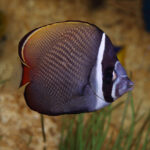
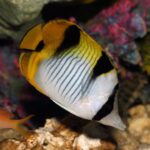


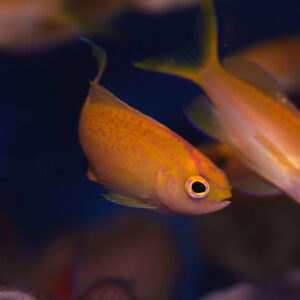
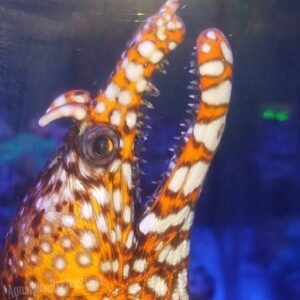
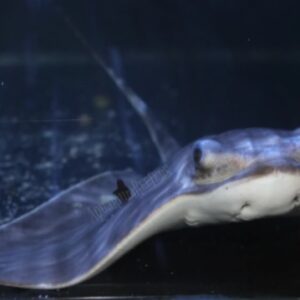
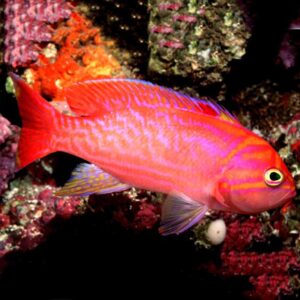
 UltraPlanktos-P 500ml - Brightwell Aquatics
UltraPlanktos-P 500ml - Brightwell Aquatics
Reviews
There are no reviews yet.